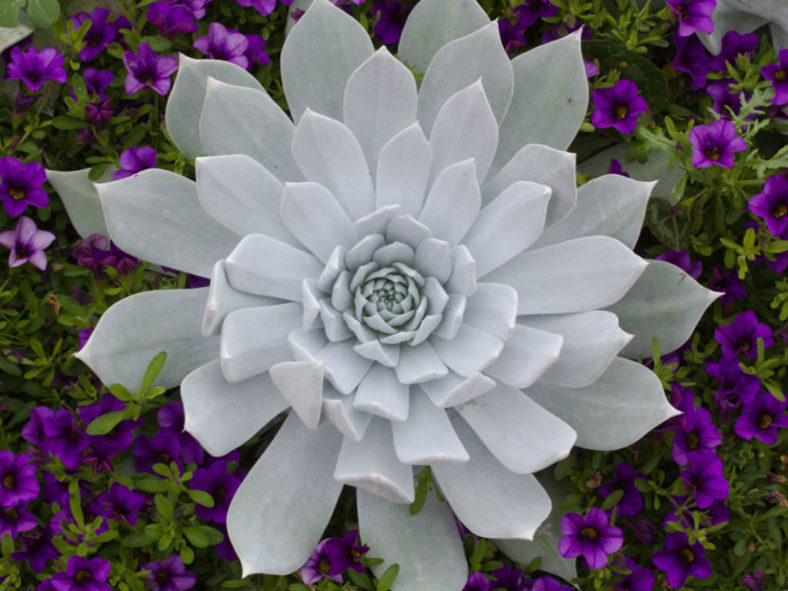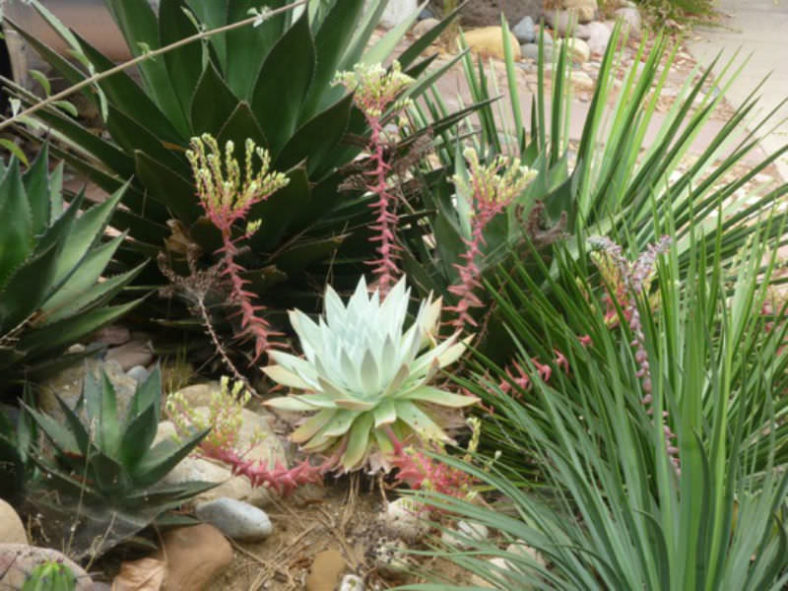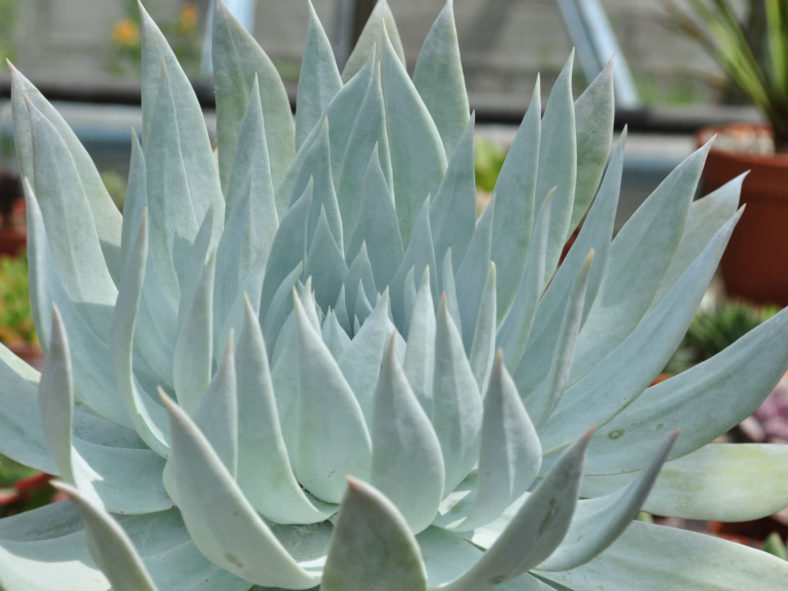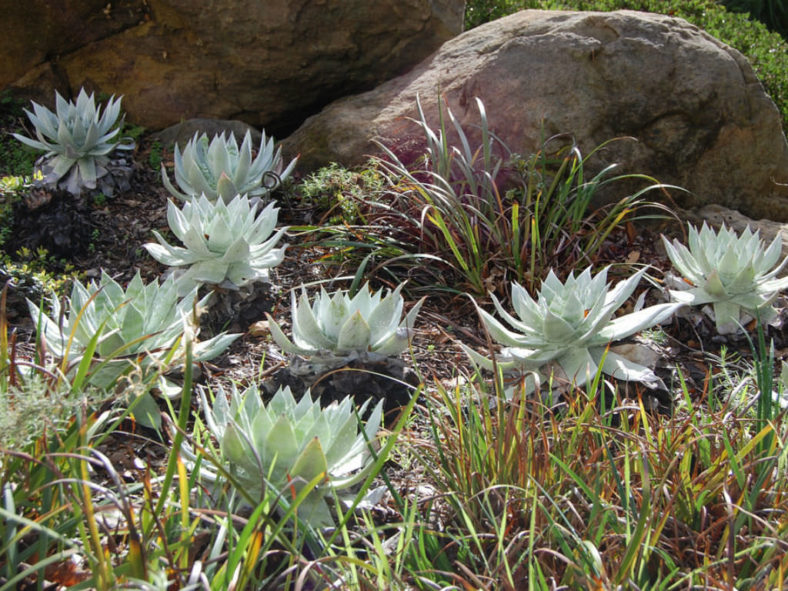Scientific Name
Dudleya brittonii D. A. Johans.
Common Name(s)
Giant Chalk Dudleya, Britton's Dudleya, Silver Dollar Plant
Scientific Classification
Family: Crassulaceae
Subfamily: Sempervivoideae
Tribe: Sedeae
Genus: Dudleya
Etymology
The specific epithet "brittonii" (pronounced "brit-TON-ee-eye") honors Nathaniel Lord Britton (1859-1934), an American botanist, taxonomist, and co-founder and the first Director of the New York Botanical Garden.
Origin
Dudleya brittonii is native to Mexico (Baja California).
Description
Dudleya brittonii is a stunning succulent with a short, thick basal stem topped with a rosette of green leaves with a white, powdery coating and often with reddish tips. The rosettes usually grow solitary or rarely in groups of 2 to 10 and can reach a diameter of up to 20 inches (50 cm). The leaves are linear to lanceolate, measuring up to 10 inches (25 cm) in length and 3.4 inches (8.5 cm) in width.
The flowers are translucent or sometimes whitish, with a yellowish hue on the keel. They are urn-shaped and appear in late winter and spring on stout, reddish-violet spikes with branchlets holding slender pedicels. The flower spikes can grow up to 3 feet (90 cm) long.

Hardiness
USDA hardiness zones 9a to 11b: from 20°F (-6.7°C) to 50°F (10°C).
How to Grow and Care
Most of the various habitats Dudleyas occupy become dry in summer. Therefore, cutting off water to Dudleyas in your garden during the summer is important. Plants grown in sandy soils or containers are exceptions. They will accept infrequent summer watering as long as the soil drains well. The onset of fall or winter rains reawakens Dudleyas from drought-induced dormancy. Their shriveled leaves plump up quickly, growth resumes, and flowering occurs during the following spring or summer. These plants are amazingly resilient. If a portion of a colony sloughs off a cliff face or is uprooted by a burrowing animal, it can persist for months until soil contact is re-established. Species that naturally grow on ocean bluffs are also salt-spray tolerant.
Dudleyas have their share of disease and pest problems. If you can prevent Argentine Ants from introducing mealybugs or aphids to your Dudleyas, they will be healthier. Mealybugs nestle in the deep recesses of the leaves, and their feeding weakens the plants.
Learn more at How to Grow and Care for Dudleya.
Links
- Back to genus Dudleya
- Succupedia: Browse succulents by Scientific Name, Common Name, Genus, Family, USDA Hardiness Zone, Origin, or cacti by Genus
Photo Gallery
Click on a photo to see a larger version.


